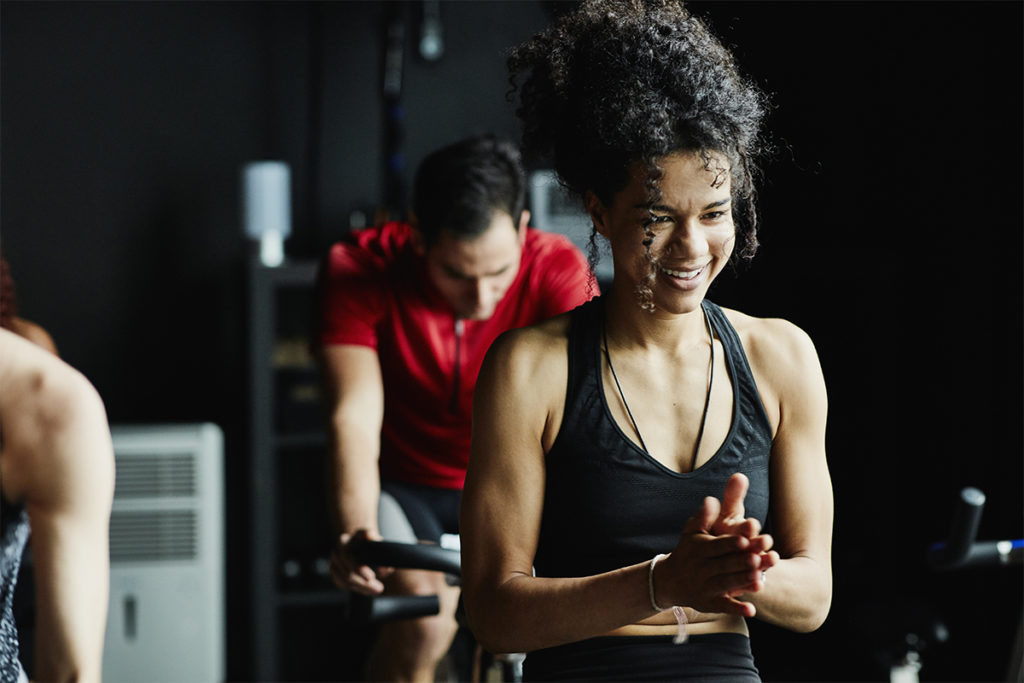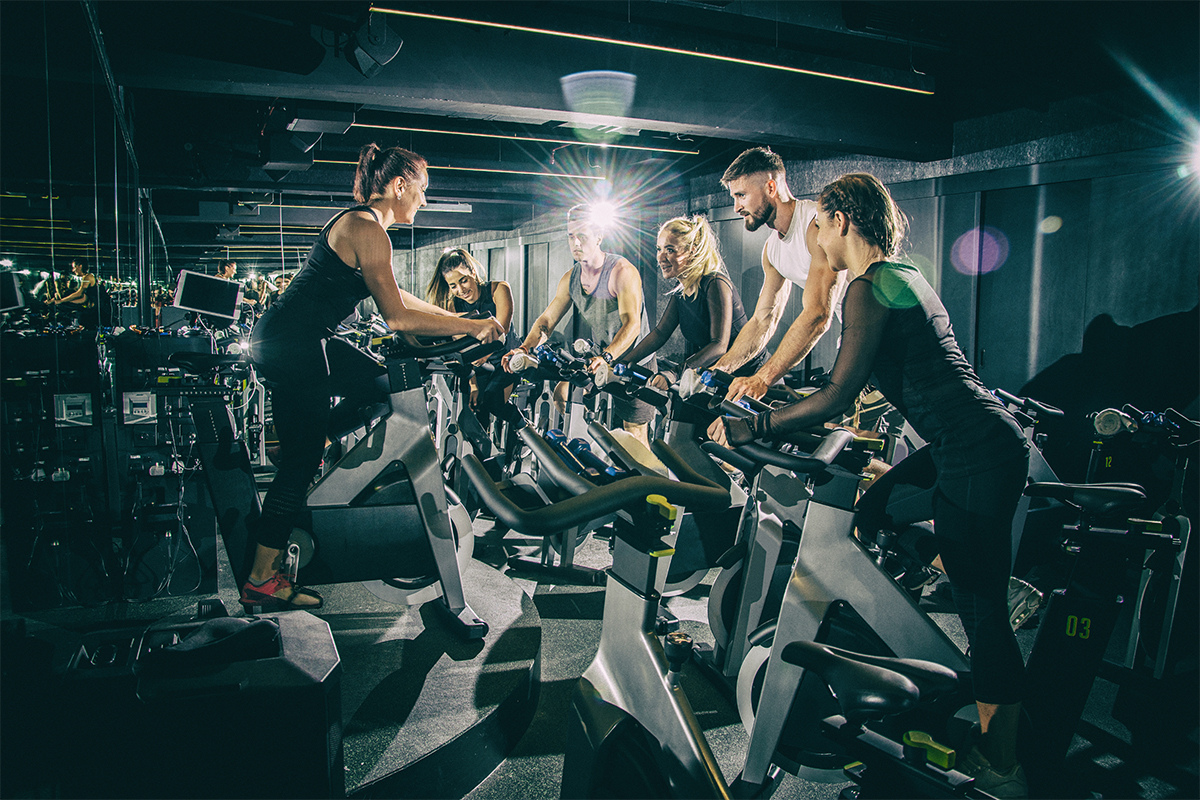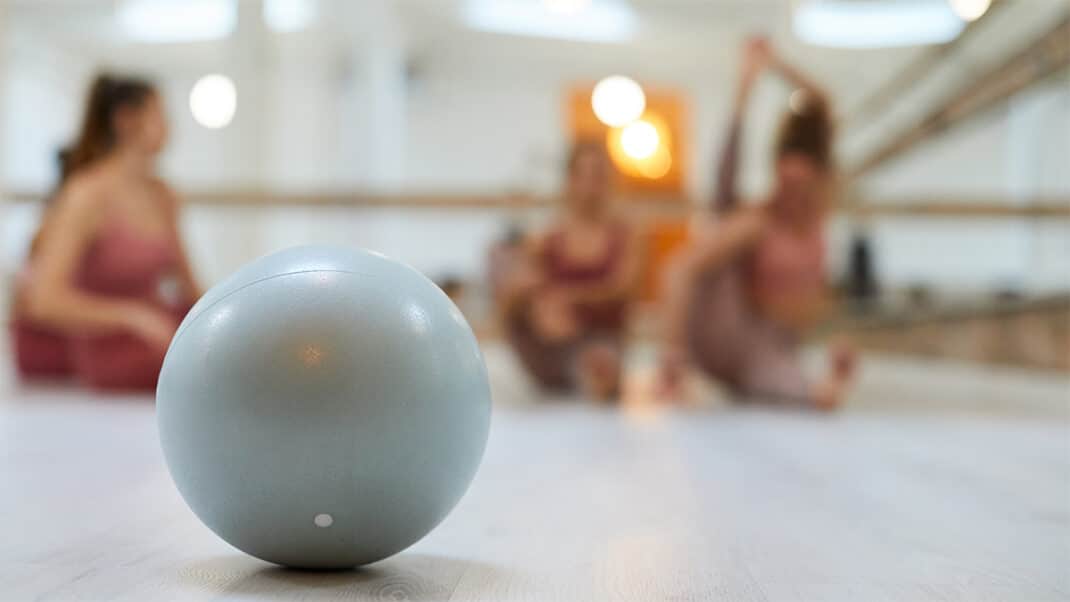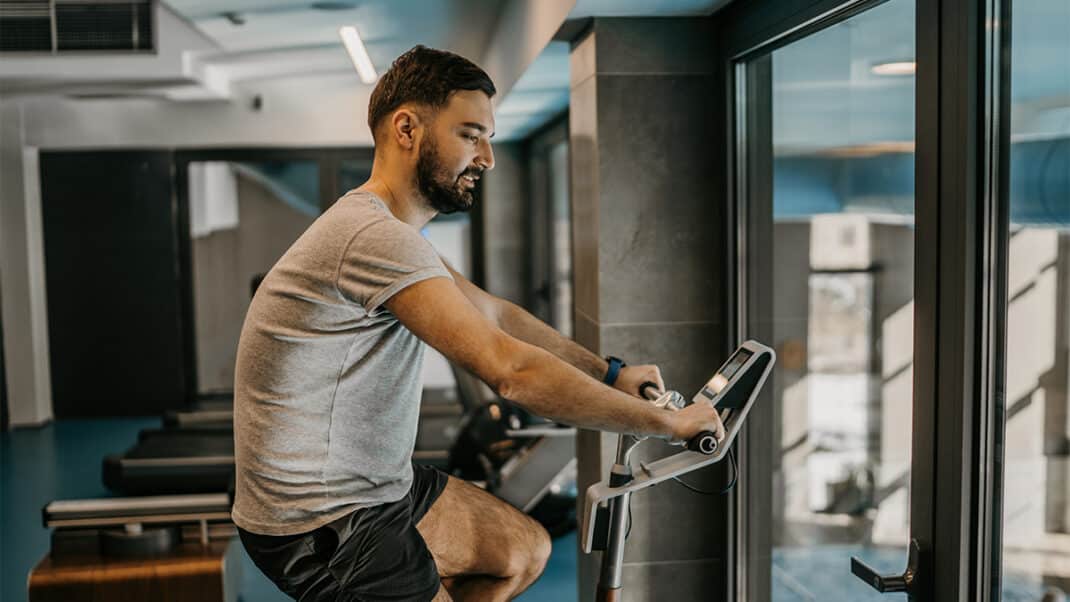Cycling Class Connection
How do instructors get students in the zone?

Cycling is still having a moment. Instructors and indoor cycling bike manufacturers have reinvented the wheel time and again, so—at this point—there really is something for everyone. Even when studios and gyms closed in early 2020, cycling remained popular, and students found a way to hop on the bike. Instructors taught virtual classes from empty studios or their homes, and some even rolled their bikes into backyards or onto docks by the water.
There’s something about teaching cycling that makes you feel like a rock star. Perhaps it’s the loud music, the dark room, or the obvious separation between students and the instructor (who’s often set off in the “bowl” of a stadium or on a stage). However, this can make it more challenging to connect. For the instructor, it’s tempting to maintain the separation; for the students, it’s easy to space out or run their own show. After all, each person is on an individual bike, going nowhere. So how do you get your students in the zone, feeling like you’re all on the same ride, going somewhere together?
Rachel Seay, creator of Indoor Cycling Teaching Ideas in Richmond, British Columbia, says she notices a common theme when classes make this connection. “Some people walk into a room and teach their class; others create an experience with each ride they lead,” says Seay. “Leaders are coaches who create an experience. Instructors simply show up and ride. I have walked into so many classes where the experience was about the instructor. It’s like they’re putting on a show to be celebrated like a celebrity. That is not why we’re here as coaches. We are here to serve our community and help people live a healthy life.”
Read on to find out more from fellow cycling instructors on how to move from drop-in instructor to connection-making coach.
See also: Set the Pace!
The Connection: On and Off the Bike

One way to make a student feel emotionally comfortable is to make sure they are physically comfortable in class and on the bike.
First impressions are everything! “Connecting to a class begins before the ride,” says Seay. “It happens the moment you meet a new rider. It begins with a handshake and a smile and builds into a coaching relationship. I have always made the effort to create a place where students feel welcomed and encouraged.”
One way to make a new student feel emotionally comfortable is to make sure the person is physically comfortable, both in class and on the bike. Maybe the student has taken cycling in the past but has no experience with that particular bike or hasn’t been on an indoor ride in years. Some people might not speak up if they’re new or have a concern, so it’s important to give students the opportunity to voice concerns directly to you, and, aside from personal introductions, the only way to do that is to get off the bike.
To connect with the class and switch from being just a performer to being a coach, it’s vital to move around the space. “My best memories are the connections I’ve made with each individual rider during the course of a ride,” says Jordan Nucci, MS, a cycling instructor in Rochester, New York. “I love to engage people when I am on and off the bike.” Nucci calls riders out by name to encourage them when he’s on the bike, but he also dismounts and connects with them one-on-one (when there aren’t pandemic limitations).
Hopping off the bike can be easier said than done at times, and it can feel awkward if you’re usually glued to your seat. Regular riders may wonder what’s going on the first few times you do it, but they’ll get used to it in no time, so there’s no need for announcements—just keep coaching as you move around the room. Grab a handheld stopwatch if you need it, and don’t let teaching to music keep you from your students.
If you teach rhythm rides, like Nucci does, he has this suggestion: “During choreography, I like to teach the first round during the first chorus, then get off the bike and have the riders do it on their own. It really feels great when everyone is moving together at the same time and hitting those beats. It’s a euphoric feeling!”
See also: Sample Class: Cycle & Strength
Have a Plan
“By failing to prepare, you are preparing to fail.” We’ve all heard some variation of this quote, and, for cycling instructors, it could not be more true. “An instructor must make each class an event or memorable experience through the purpose of the ride and the music,” says Janelle Veteri, a Schwinn® master trainer from Seattle.
She says this ability comes with careful planning and passion and adds that, to be a world-class instructor, “you must have a physiologically sound class plan to improve the fitness of participants.”
With a solid plan, you’re free to focus on students during the ride rather than winging it. If you’ve prepared adequately, you can get out of your head and into the zone. Of course, part of your preparation includes making your playlist, and Nucci says the music must be “just right.” Veteri agrees, adding that the second step in becoming a world-class instructor is to have an inspiring playlist.
It’s a universal agreement that the music in your cycling class should match the ride, but to take your class to the next level and move from simply instructing to being a coach, you must go beyond music and drills. One way to connect with students is to set a classwide intention and offer inspirational stories. “Sometimes the intention is simple and fun, such as, ‘Let’s leave with sweaty eyebrows,’” says Seay. “Other times it’s about a feeling I want to create such as, ‘Let’s work so hard that when you walk out those doors today, you are overwhelmed with a sense of pride in yourself.’”
Saying the right thing is important, but so is knowing when to say nothing at all. “Knowing when to be quiet and let participants connect to the music is an essential skill for cycling instructors,” says Veteri. “Knowing how to inspire through stories is another skill that’s practiced and magical when done correctly. Magic moments happen when music and inspirational stories come together.”
Invest in Yourself

Cycling coaches can become better leaders by investing in their own skill sets.
Where can you find these inspirational stories and get ideas for intentions? By investing in your education and taking time to be a student, not just a teacher. “You must be educated to be seen as a professional,” says Veteri. “I have been in the industry for 20-plus years, but I consider myself a lifelong student and take every opportunity to learn how to be a more impactful presenter.”
Veteri says successful instructors go beyond cycling-related education. “Listen to all kinds of powerful speakers and improve your public-speaking skills.”
Yes, it’s a time commitment, and sometimes a financial one, too, but it’s worth it. “When coaches invest in their own skill sets, they become better leaders and lead dynamic, engaging classes that everyone wants to participate in,” says Seay.
See also: Crystal-Clear Cuing for Indoor Cycling
Take Classes and Have Fun
Speaking of participating, there’s a good chance you started teaching cycling because you loved taking classes yourself. Veteri says instructors should take as many classes as possible to get class plan and playlist ideas, build community (students may see you participating), increase camaraderie among staff, signal to other instructors that you could be a sub, and remind yourself why you got into this profession to begin with.
As serious as some riders and instructors can be on the bike, try to have fun—and don’t forget why you’re all there. “If you can get people to smile and have fun while they’re on the bike, and [get them to] forget about being perfect and about all their other stressors, you can feel the connection and group energy,” says Nucci.
When everything lines up just right, you’ll remember how inclusive, accessible and effective cycling can be for your students. “That is the beautiful thing about indoor cycling,” says Seay. “Regardless of fitness levels, we can all ride together.”
Connection and Inspiration Off and On the Bike
If you need a reminder of why you teach indoor cycling, these reflections from two instructors
may help:
“All kinds of emotions come out when participants feel safe in your class and you’ve created an experience that touches them beyond just fitness,” says Janelle Veteri, a Schwinn® master trainer from Seattle. “My most powerful moment came when I was at a funeral of a class member’s child who died of brain cancer. In the eulogy, he spoke about a story I shared in class and how it gave him peace through the most challenging time of his life. As instructors, we never know how powerful our messages can be, and we have a special opportunity to be the best part of someone’s day or help them through the most challenging time they will ever face.”
Joy Keller, a Schwinn and Keiser®-certified instructor in San Diego, shares one of her most memorable moments of connection with a participant.
“One of my most avid participants was new to fitness and struggled to keep up during every class, but he was very dedicated. One day, after the ride, he approached me and said that his mother had just died, his wife had just been diagnosed with breast cancer, and his daughter had fallen off a horse and was facing surgery. He told me that my class was the only thing that was ‘keeping him together’ and that he appreciated my efforts. That touched me deeply and left me speechless.”
Andrea Blair Cirignano
Andrea is a yoga and group fitness instructor and former group fitness supervisor in the Seattle area. She earned her bachelor's degree in journalism from the Edward R. Murrow College of Communication at Washington State University and writes health and fitness articles for a variety of publications.





